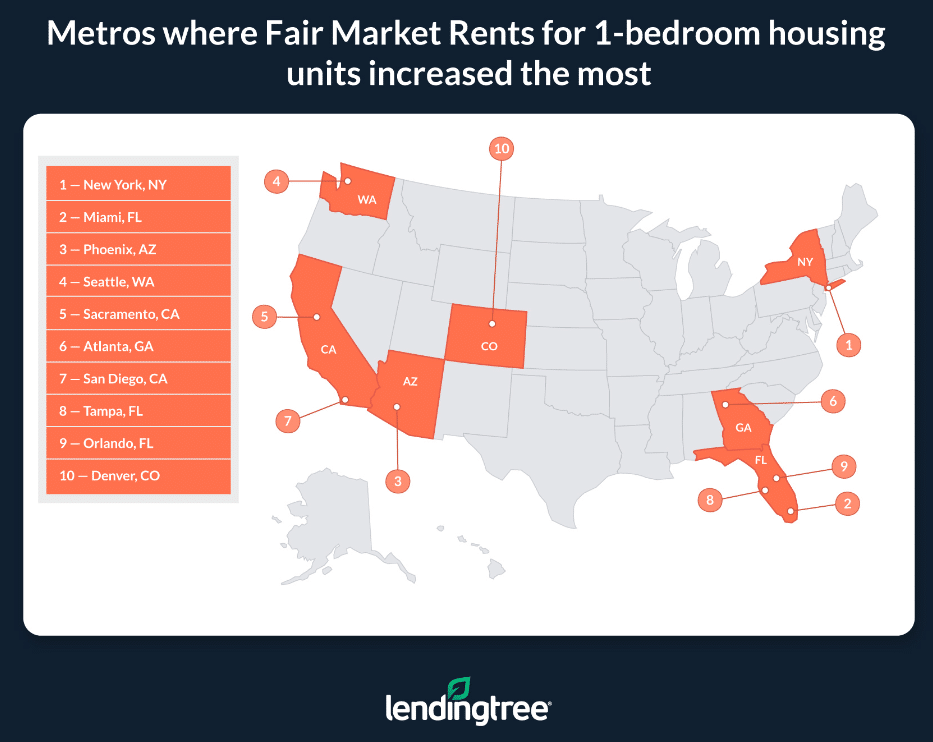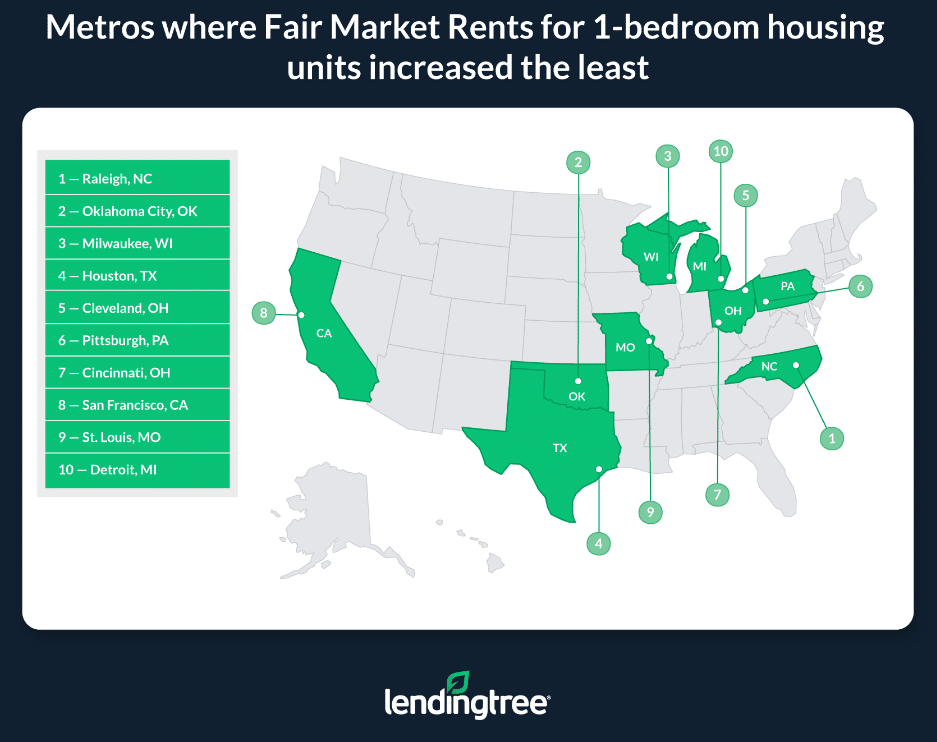Renting, traditionally seen as a more affordable option compared to homeownership, has become increasingly expensive in many of the nation’s largest cities. A recent analysis by LendingTree, using data from the U.S. Department of Housing and Urban Development (HUD), paints a stark picture of how Fair Market Rents (FMRs) for one- and two-bedroom units have surged across the country over the five-year span of 2019-2024.
On average, renters in the 50 largest U.S. metropolitan areas have seen FMRs for one-bedroom units climb by $450, and two-bedroom units by $505. These increases are felt most acutely in cities like New York, Miami, and Phoenix, where the FMR for a one-bedroom apartment has risen by $852, $737, and $731, respectively. These figures highlight the steep escalation in rental costs, even in markets that were already among the most expensive.
Yet, the correlation between FMR growth and overall cost isn’t always straightforward. For example, while New York saw the largest dollar increase for one-bedroom units, its 2024 FMR of $2,451 still sits below San Francisco’s, where rents have grown more modestly but remain the highest in the nation.

Rents Rising in Unexpected Places
Some cities have managed to keep rent hikes relatively minimal. Raleigh, North Carolina, for instance, saw the smallest increase in one-bedroom FMRs, with a modest $61 bump since 2019. Oklahoma City and Milwaukee followed with increases of $195 and $226, respectively. However, even these “low” increases still reflect a broader trend of rising housing costs that show no signs of slowing.
When it comes to two-bedroom units, New York again tops the list with a $921 increase in FMRs. Miami and Sacramento, California, also experienced significant jumps of $870 and $852, respectively. Meanwhile, cities like Raleigh, San Francisco, and Oklahoma City saw smaller increases, yet these figures still contribute to an overall upward trend in rental prices nationwide.

The Supply and Demand Dilemma
A key factor driving these rent increases is the ongoing imbalance between housing supply and demand. As demand continues to outpace the availability of rental units, prices naturally rise. This supply shortage leaves renters with fewer options and less leverage in negotiating rental terms, often forcing them to accept higher rents or risk losing their homes.
The solution? Building more housing units could help temper these rising costs. Increased supply would introduce more competition among landlords, potentially driving down prices and offering renters more choices. While this is a simplified view of the complex dynamics at play, increasing the housing supply remains one of the most effective strategies to address the affordability crisis in many U.S. cities.
As rents continue to rise, being proactive and informed can help renters navigate the challenging housing market and make decisions that align with their financial goals.
Click here for LendingTree’s report on the nation’s rental market.
The post Examining Escalating Rental Prices, Post-2019 first appeared on The MortgagePoint.























